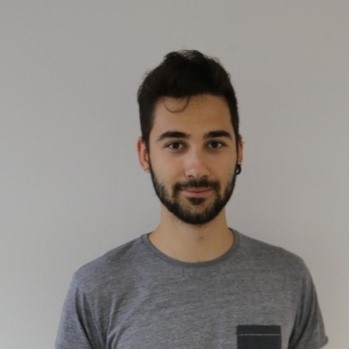Título provisional de la tesis
Improving energy efficiency in buildings with printed perovskite solar cells on the ceramic tiles using phthalocyanines as components
Resumen
The present project aims to print Perovskite solar cells (PSCs) on the top of ceramic tiles in order to be integrated in buildings. The perovskite solar cells must be designed and developed to reach high efficiencies, and acceptable stability under local climatic conditions. The final devices will substitute the traditional ceramic tiles on the roof or facade, while contributing to improvement of the energy efficiency of buildings.
Several techniques have been used to develop hybrid perovskite layers, the spin coating is the most used one, but it wastes large amount of material, it cannot be scaled for large area and often uses hazardous solvents. In this project, we will focus on developing PSCs reaching high performances on ceramic tiles by inkjet printing technique, which is fast, low cost, can cover large scale area, while offering a great opportunity to the development and commercialization of this technology.
Before fabrication the PSC, a design of the cell is required. this will be done based on the state of the art and on the results of the simulations carried out within the project. In this step, the materials, thicknesses, and sequence of the layers will be defined, to fabricate PSCs.
The designed perovskite solar cell will be fabricated using metallophthalocyanines prepared in the Diseño Molecular Research Group at the Universidad Miguel Hernández de Elche (UMH). Then a formulation of special phthalocyanines is required starting by the adaptation of the recipes of the spin coating technique to the inkjet printing one, while making sure to get good droplets that can be printed with high precision on the top of the ceramic tiles. In this phase, all the deposition parameter for the printed PSCs will be mastered, including formulation of the phthalocyanines, printing speed, viscosity, temperature of the process, in the other to fabricate highly reproductible PSCs. The stability of the optimized PSC will be investigated in indoor laboratory using the climatic chamber to measure cells resistance to temperature and humidity. And by exposing the solar cells in the outdoor environment, to test them regularly, in order to evaluate any possible degradations under the local climatic conditions. Based on the results of the stability tests, additional layers will be explored and optimized to enhance the stability of these cells.
Finally, the best thin film recipes will be developed in large scale area of 100*100 mm, 200*200 mm and then A4 size mm to be integrated in the roof and facade of the building. The Bioengineering Institute will be a perfect place to serve as building to carry out the studies of the efficiencies of the fabricated devices.
Director/a: Dra. Angela Sastre Santos y Dr. Luis Martín Gomis
Publicaciones derivadas de la tesis:
• Hongye Chen, Luis Martin-Gomis, Zhiyum Xu, Jan C Fischer, Ian A Howard, David Herrero, Víctor Sobrino-Bastán, Ángela Sastre-Santos, Ritesh Haldar and Christof Wöll. «Tunable J-type aggregation of silicon phthalocyanines in surface-anchored metal-organic framework thin film» Phys. Chem. Chem. Phys., 2023,25, 19626-19632
• Víctor Sobrino-Bastán, Luis Martín-Gomis and Ángela Sastre-Santos «Synthesis of 4-methylthiophenyl silicon phthalocyanines axially substituted with carboxylic acids for MOF materials» Journal of Porphyrins and Phthalocyanines 2023,27,331-339.
Código ORCID: 0009-0003-7571-5932

